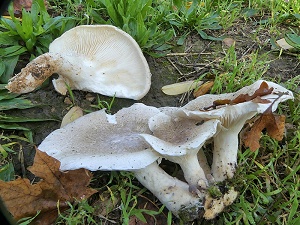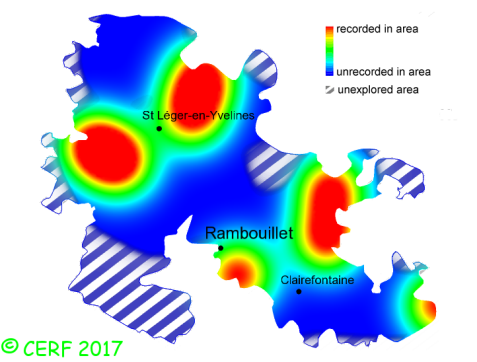| Pleurotus dryinus (Pers.:Fr.) P. Kumm. |
|
|
|
|
|
|
The cap is white then buff-grey, sometimes yellowing, convex, then more or less flattened; its margin is smooth, thin, inrolled at first, with overhanging veil remnants in the youth. The cap surface is downy, fibrillose, then slightly scaly from the centre, matt. The stem is off-centred, white, full and sometimes deeply rooting, typically fused at base, with veil remnants which can form a short lasting membranous ring. The flesh is whitish, turning yellow when drying, more or less unchanging when cut and exposed to air, but turning yellow when drying; its taste is mild, faint, nutty; the odour is fruity-spicy or of aniseed; its texture is fibrous, tough. The gills are whitish then cream, becoming yellow with age, deeply decurrent, connected together, sometimes forming a kind of loose network on stem, loosely crowded . The spore print is white. This species is parasitic of weakened trees or saprophytic. It grows on dead wood, isolated or in small tufts, on dead or live deciduous wood, more often on oak, also on beech or poplar. The fruiting period takes place from August to December.
Chemical tests : none. Distinctive features : White to buff, scaly-fibrillose cap; in the youth : veil remnants hanging from cap margin and short-lasting membranous ring; lateral stem; white flesh, drying yellow; gills running down stem and eventually forming ridges; on broad-leaved trees Pleurotus dryinus is quite rare and scattered in the forest of Rambouillet, and is infrequent, more generally speaking . | ||
|
page updated on 14/01/18

